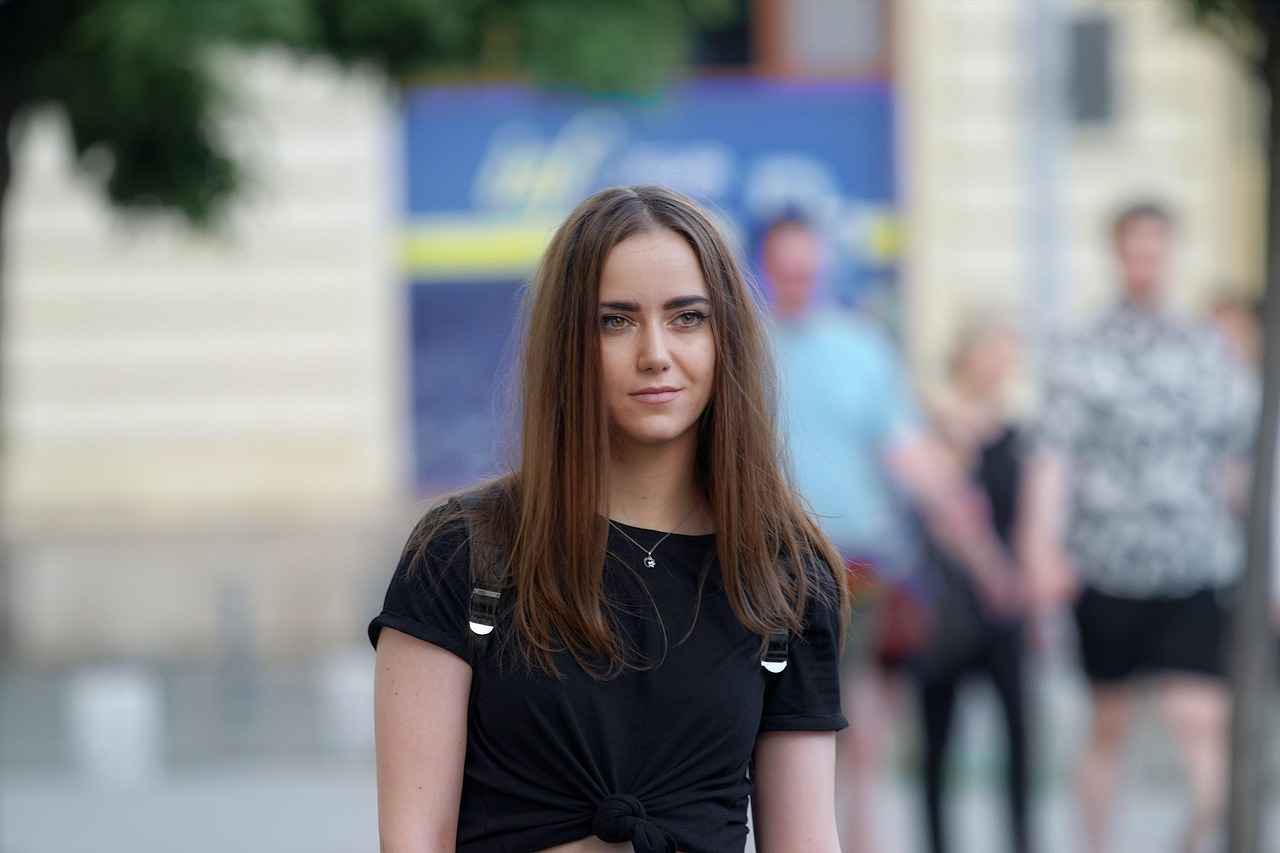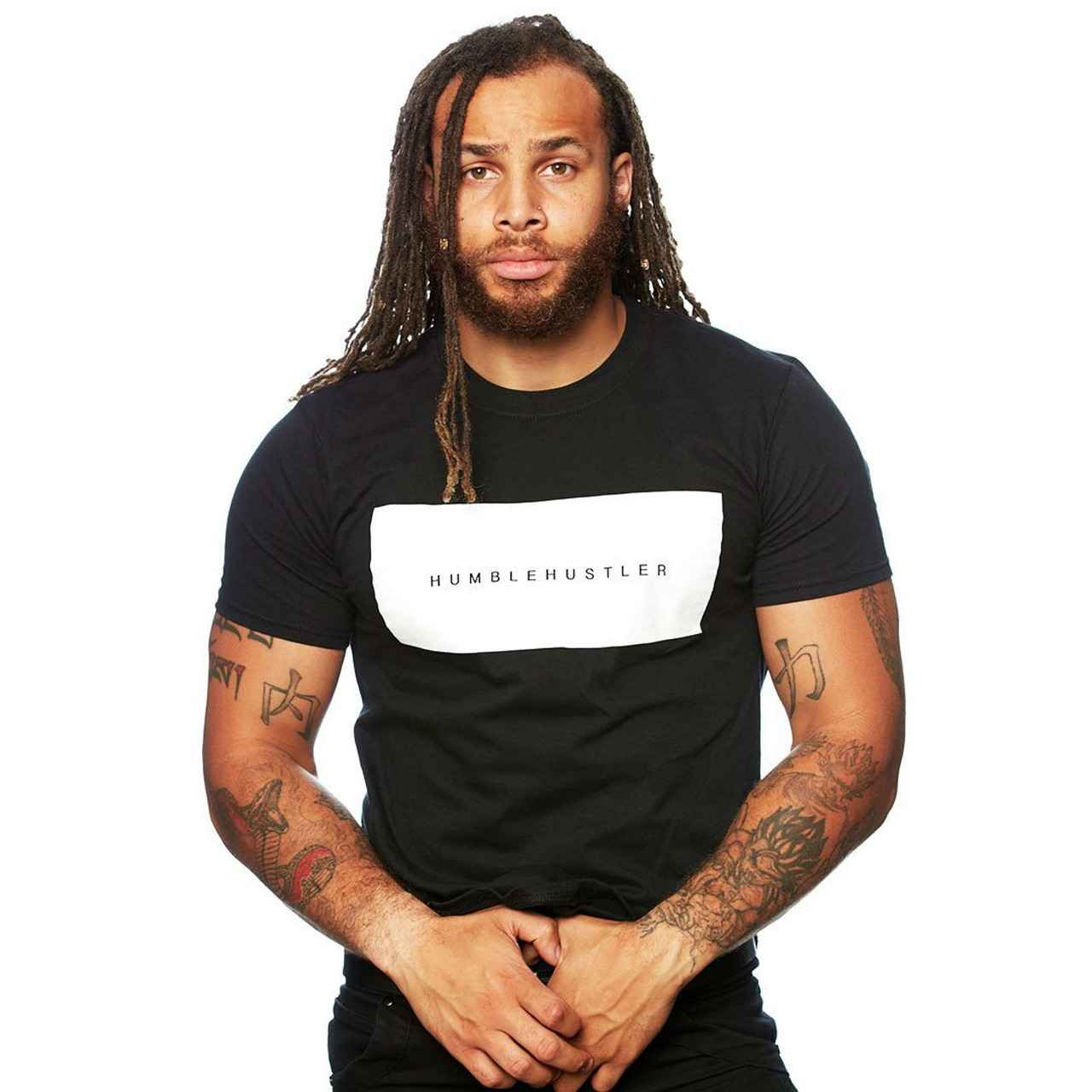This article serves as a comprehensive guide for obtaining custom t-shirts tailored for your business event. It covers crucial aspects such as design, printing methods, costs, and effective branding strategies.
Understanding Your Needs
Before embarking on the journey of custom t-shirt printing, it is vital to clearly define your specific needs. Consider the purpose of the shirts, your target audience, and the desired impact you wish to achieve at your event.
Choosing the Right Fabric
The choice of fabric is essential for the comfort and longevity of your custom t-shirts. Here are some popular fabric types:
- Cotton: Soft and breathable, ideal for casual settings.
- Polyester: Durable and moisture-wicking, perfect for active events.
- Blended Fabrics: Combine the benefits of both cotton and polyester for a great balance.
Selecting Your Design
A compelling design is crucial for your custom t-shirts. Focus on integrating your brand logo effectively and choosing colors that resonate with your audience. Consider the psychology of colors to enhance brand perception.
Printing Methods Explained
Understanding different printing methods is essential for selecting the best option for your needs. The most common methods include:
- Screen Printing: Ideal for large orders and simple designs.
- Digital Printing: Offers high detail and is perfect for complex designs.
Budgeting for Custom T-Shirts
Establishing a budget is crucial. Factors that influence costs include fabric choice, printing method, and order quantity. Look for discounts or bulk order deals to maximize your investment.
Choosing the Right Supplier
Selecting a reliable supplier is key to ensuring quality and timely delivery. Research supplier reputations through reviews and request samples to evaluate their offerings before making a bulk order.
Promoting Your Custom T-Shirts
Once your custom t-shirts are ready, effective promotion can significantly enhance your event’s success. Utilize social media platforms to create buzz and consider offering t-shirts as giveaways to engage attendees.
Conclusion: Making Your Event Memorable
In conclusion, custom t-shirts can greatly enhance your business event’s branding and overall attendee experience. By following the steps outlined in this guide, you can create impactful and memorable shirts for your audience.

Understanding Your Needs
Before embarking on the journey of custom t-shirt printing, it’s crucial to thoroughly assess your specific requirements. This initial step will set the foundation for a successful outcome. Start by addressing the following key areas:
- Purpose of the Shirts: Clearly define why you need the custom t-shirts. Are they for a corporate event, a promotional giveaway, or perhaps a team-building activity? Understanding the purpose will guide your design and material choices.
- Target Audience: Consider who will be wearing these shirts. Are they employees, clients, or event attendees? Tailoring your design and messaging to resonate with your audience can enhance engagement and effectiveness.
- Desired Impact: Think about the impression you want to leave. Do you want the shirts to promote brand awareness, foster team spirit, or simply provide a fun keepsake? This will influence your design elements and overall strategy.
Additionally, it’s beneficial to conduct a brief market analysis. Look into trends within your industry and gather inspiration from successful campaigns. This research can inform your choices and help you create a product that stands out.
Finally, don’t overlook the importance of budget considerations. Knowing how much you are willing to spend can help narrow down your options for materials, printing methods, and suppliers. Balancing quality with cost is essential for achieving the best results.
By taking the time to understand your needs thoroughly, you will be better equipped to navigate the custom t-shirt printing process, ensuring that the final product aligns perfectly with your goals.

Choosing the Right Fabric
for custom t-shirts is essential to ensure both comfort and durability. The fabric you select can significantly influence the overall experience of the wearer, making it crucial to understand the different options available. Below, we will explore various fabric types, their benefits, and how to choose the best option for your event.
When it comes to custom t-shirts, the most common fabric choices are cotton, polyester, and blended fabrics. Each of these materials has unique characteristics that cater to different needs and preferences.
- Cotton: Known for its softness and breathability, cotton is an excellent choice for casual events. It is comfortable to wear in warm weather and is often preferred for its natural feel. However, cotton can shrink and wrinkle, which is a consideration for long-term use.
- Polyester: This synthetic fabric is highly durable and resistant to shrinking and stretching. Polyester t-shirts are often moisture-wicking, making them ideal for active events where participants may sweat. Additionally, they tend to be more affordable than cotton options.
- Blended Fabrics: Blends, such as cotton-polyester mixes, combine the best features of both materials. These fabrics offer the comfort of cotton with the durability of polyester, making them versatile for various events.
When selecting the right fabric for your custom t-shirts, consider the following factors:
- Event Type: If your event is outdoors and in warm weather, breathable cotton or a cotton blend may be preferable. For sports or active events, moisture-wicking polyester could be the better choice.
- Budget: Cotton tends to be more expensive than polyester, so your budget may also influence your decision. Blended fabrics can provide a cost-effective compromise.
- Longevity: Consider how often the t-shirts will be worn. If they are for a one-time event, cotton may suffice. For repeated use, opt for more durable materials.
In conclusion, the right fabric selection is vital for the success of your custom t-shirts. By understanding the characteristics and benefits of each fabric type, you can make an informed choice that enhances the comfort and durability of your custom apparel, ensuring your event is memorable and successful.
Cotton vs. Polyester
When it comes to selecting the right fabric for your custom t-shirts, understanding the differences between cotton and polyester is essential. Each fabric has its unique characteristics, advantages, and disadvantages that can impact your choice based on your specific needs.
| Feature | Cotton | Polyester |
|---|---|---|
| Comfort | Soft and breathable, ideal for casual wear | Less breathable but often smooth and lightweight |
| Durability | Less durable, prone to wear and tear | Highly durable, resistant to shrinking and stretching |
| Moisture Management | Absorbs moisture, may feel wet in humid conditions | Moisture-wicking, keeps you dry during physical activities |
| Cost | Generally more expensive | Usually more affordable |
Benefits of Cotton: Cotton t-shirts are known for their softness and breathability, making them a popular choice for casual events and warm weather. They provide a comfortable fit and are gentle on the skin, which is why many people prefer them for everyday wear.
Advantages of Polyester: On the other hand, polyester t-shirts are celebrated for their durability and moisture-wicking properties. They are ideal for active events, as they help keep the wearer dry and comfortable. Additionally, polyester is often more affordable, making it a budget-friendly option for bulk orders.
In conclusion, the choice between cotton and polyester ultimately depends on the purpose of your custom t-shirts. If comfort and breathability are your top priorities, cotton is the way to go. However, if you need durability and moisture management, polyester may be the better choice. Consider your event’s needs and your audience’s preferences to make an informed decision that will enhance your branding efforts.
Benefits of Cotton
Cotton t-shirts have long been a staple in casual wear, and for good reason. Their unique properties make them a favored choice among consumers, especially in warm weather and during casual events. In this section, we will explore the numerous advantages of cotton t-shirts, making them an excellent option for your custom apparel needs.
- Softness and Comfort: One of the most significant benefits of cotton is its softness. Cotton fibers are gentle against the skin, providing unmatched comfort that is often lacking in synthetic materials. This makes cotton t-shirts ideal for prolonged wear, whether you’re attending a business event or enjoying a casual outing.
- Breathability: Cotton is a natural fiber that allows air to circulate, which helps keep the body cool. This breathability is particularly beneficial during hot summer days or when engaging in physical activities, as it helps wick away moisture and prevents overheating.
- Durability: Despite its soft texture, cotton is surprisingly durable. High-quality cotton t-shirts can withstand multiple washes without losing their shape or softness, making them a wise investment for custom printing.
- Hypoallergenic Properties: For individuals with sensitive skin, cotton is a safe choice. It is less likely to cause irritation compared to synthetic fabrics, making it suitable for a wider audience.
- Eco-Friendly: Cotton is a renewable resource, and organic cotton options are available for those looking to minimize their environmental impact. Choosing cotton t-shirts can align with eco-conscious branding efforts.
In summary, the benefits of cotton t-shirts extend beyond mere comfort. Their softness, breathability, durability, hypoallergenic properties, and eco-friendliness make them an excellent choice for custom printing, ensuring your team or event attendees will look and feel great.
Advantages of Polyester
Polyester t-shirts have gained immense popularity, especially among those engaged in active events and long-term use. Their unique properties make them an excellent choice for various activities, ensuring comfort and style. Below are some of the key benefits of polyester t-shirts:
- Durability: Polyester is known for its strength and resilience. Unlike cotton, which can wear out over time, polyester maintains its shape and color even after multiple washes, making it a reliable choice for frequent use.
- Moisture-Wicking: One of the standout features of polyester is its moisture-wicking ability. This means that it can efficiently pull sweat away from the body, keeping the wearer dry and comfortable during intense physical activities.
- Quick Drying: Polyester dries much faster than cotton, making it ideal for outdoor events or workouts. This quick-drying property helps prevent the discomfort of wet clothing, which can be particularly beneficial in humid conditions.
- Affordability: Generally, polyester t-shirts are more affordable than their cotton counterparts. This cost-effectiveness allows businesses to order in bulk without breaking the bank, making them an attractive option for promotional events.
- Color Retention: Polyester fabrics hold dyes better than cotton, resulting in vibrant colors that last longer. This feature is crucial for businesses looking to maintain brand consistency and visibility.
In summary, polyester t-shirts offer a blend of durability, comfort, and affordability, making them an ideal choice for any business event. Their moisture-wicking properties ensure that participants stay dry and focused, while their resilience means they can be worn repeatedly without losing their appeal.
Blended Fabrics
are an innovative solution in the world of textiles, merging the characteristics of two or more types of fibers to create a superior material. These fabrics are designed to enhance both comfort and durability, making them an excellent choice for custom t-shirts. When you choose blended materials for your custom apparel, you can enjoy a variety of benefits that cater to different needs and preferences.
One of the primary advantages of blended fabrics is their versatility. By combining fibers such as cotton and polyester, manufacturers can produce t-shirts that are not only soft and breathable but also resistant to wrinkles and shrinking. This means that your custom t-shirts will maintain their shape and appearance even after multiple washes, which is crucial for events where presentation matters.
Furthermore, blended fabrics often offer moisture-wicking properties, making them ideal for active events or warmer climates. This feature helps to keep the wearer dry and comfortable, enhancing the overall experience of your attendees. Additionally, the combination of materials can lead to a more vibrant color retention, ensuring that your designs stand out and effectively communicate your brand message.
When selecting blended fabrics for your custom t-shirts, consider the specific blend ratios that suit your needs. For example, a 60/40 cotton-polyester blend provides a balance of softness and durability, making it perfect for casual wear. On the other hand, a tri-blend fabric, which typically includes cotton, polyester, and rayon, offers an ultra-soft feel, ideal for a more premium look.
In conclusion, utilizing blended fabrics for your custom t-shirts not only enhances the comfort and durability of your apparel but also aligns with the needs of your target audience. By making an informed choice about fabric selection, you can elevate your branding efforts and ensure a memorable experience for your event attendees.
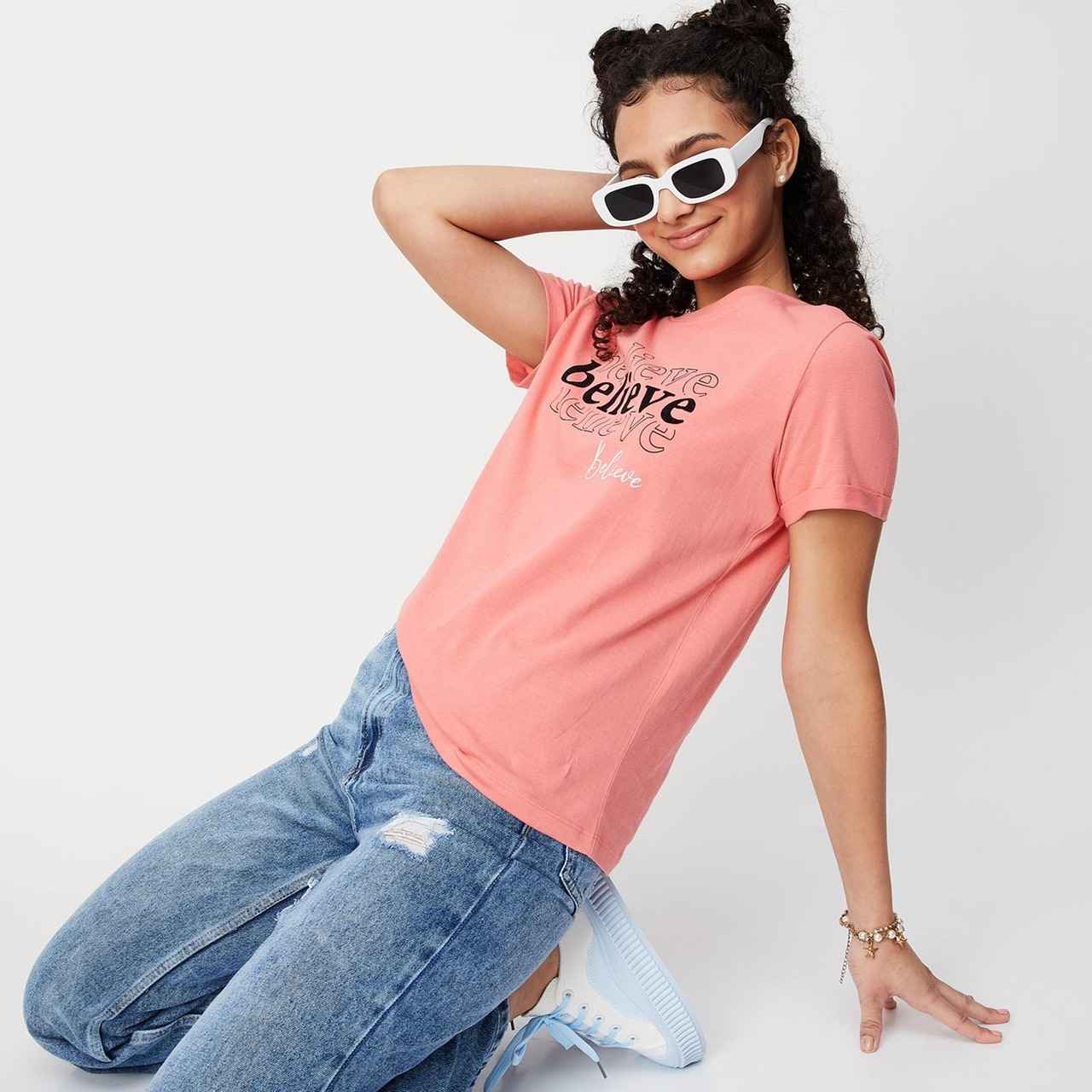
Selecting Your Design
Creating a compelling design is crucial for your custom t-shirts. A well-thought-out design not only captures attention but also effectively communicates your brand’s message. This section delves into essential design elements, color schemes, and strategies for conveying your brand identity.
- Design Elements: The foundation of your t-shirt design lies in its elements. Consider incorporating the following:
- Graphics: Use eye-catching visuals that resonate with your target audience.
- Typography: Choose fonts that reflect your brand’s personality; ensure readability.
- Layout: Balance the placement of text and images for a cohesive look.
- Color Schemes: Colors evoke emotions and can significantly influence perceptions. Here are some tips:
- Brand Colors: Incorporate your brand’s primary colors to enhance recognition.
- Color Psychology: Understand how different colors affect emotions; for example, blue conveys trust, while red signifies excitement.
- Contrast: Ensure sufficient contrast between background and design elements for visibility.
- Conveying Your Brand Message: Your t-shirt design should tell a story. Consider the following:
- Taglines: Use short, impactful phrases that encapsulate your brand’s mission or values.
- Imagery: Select images that align with your brand’s ethos and appeal to your audience.
- Consistency: Maintain a consistent design approach across all marketing materials to strengthen brand identity.
In summary, investing time in designing your custom t-shirts can yield significant returns in brand recognition and audience engagement. By focusing on design elements, color schemes, and your brand message, you can create t-shirts that not only look great but also resonate with your audience.
Incorporating Your Brand Logo
Integrating your brand logo into the t-shirt design is not just a matter of aesthetics; it is a vital step in establishing brand recognition. A well-placed logo can create a lasting impression, making your brand more memorable to potential customers and event attendees.
When it comes to logo placement, consider the following best practices:
- Visibility: Ensure your logo is easily visible from a distance. Placing it on the front of the t-shirt, preferably at chest level, allows for maximum exposure.
- Size Matters: The size of your logo should be proportionate to the t-shirt. A logo that is too small may not be noticed, while one that is too large can overwhelm the design.
- Color Contrast: Choose colors that contrast well with the t-shirt fabric. This ensures that your logo stands out and is easily readable.
- Consistency: Use the same logo across all promotional materials to maintain brand consistency. This reinforces your brand identity and helps in building trust with your audience.
Additionally, consider the design elements surrounding your logo. Incorporating complementary graphics or text can enhance the overall look while keeping the focus on your brand. For instance, using a tagline or a related graphic can help convey your brand message more effectively.
In conclusion, integrating your brand logo into your custom t-shirt design is essential for effective branding. By following these best practices for logo placement and visibility, you can ensure that your t-shirts not only look great but also serve as powerful marketing tools for your business.
Choosing Colors Wisely
is a crucial aspect of branding that can profoundly influence how your audience perceives your business. Color psychology plays a vital role in this process, as different colors evoke distinct emotions and associations. This section delves into the significance of color selection and offers practical tips for choosing colors that resonate with your target audience.
When selecting colors for your brand, consider the following key factors:
- Emotional Response: Colors can elicit specific feelings. For instance, blue often conveys trust and reliability, while red can evoke excitement and urgency. Understanding the emotional implications of colors can guide your choices.
- Brand Identity: Your color palette should reflect your brand’s values and personality. A tech company might opt for cooler tones like gray and blue, while a children’s brand may choose bright and playful colors like yellow and orange.
- Target Audience: Knowing your audience is essential. Colors can have different meanings across cultures and demographics. For example, while green typically represents nature and health in many Western cultures, it may symbolize wealth in others.
- Contrast and Readability: Ensure that your color choices provide adequate contrast for readability. This is particularly important for text on backgrounds. Using tools like color contrast checkers can help you make informed decisions.
To effectively choose your brand colors, start by creating a mood board that includes colors that resonate with your brand’s message. Experiment with different combinations and test them with your target audience to gauge their reactions.
In conclusion, color selection is more than just an aesthetic choice; it is a powerful tool that shapes perceptions and influences consumer behavior. By understanding color psychology and carefully selecting hues that align with your brand identity and audience, you can create a lasting impression that enhances your overall branding strategy.

Printing Methods Explained
When it comes to creating custom t-shirts, understanding the various printing methods available is crucial for making the right choice. Each method has its own set of advantages and disadvantages, impacting factors such as quality, cost, and production time. This guide will help you navigate through the most common printing techniques, ensuring you select the best option for your needs.
| Printing Method | Advantages | Disadvantages | Best For |
|---|---|---|---|
| Screen Printing | High durability, vibrant colors, cost-effective for large orders. | Not ideal for complex designs, setup costs can be high. | Bulk orders, simple designs. |
| Digital Printing | High detail, no minimum order, great for complex designs. | Higher cost per unit, may not be as durable as screen printing. | Small runs, intricate artwork. |
| Heat Transfer | Good for small orders, easy to apply. | Less durable, can crack or fade over time. | Personalized items, short runs. |
| Direct-to-Garment (DTG) | Excellent for detailed designs, soft finish. | Slower production speed, can be costly for larger quantities. | Small batches, detailed prints. |
By considering these factors, you can make an informed decision on the best printing method for your custom t-shirts. Whether you prioritize cost-effectiveness, design complexity, or production speed, understanding these methods will help you achieve the best results for your business event.
In conclusion, the choice of printing method can significantly influence the success of your custom t-shirts. Take the time to evaluate your needs and the available options to ensure that your t-shirts not only look great but also meet your budget and timeline requirements.
Screen Printing
is a widely used technique for creating custom t-shirts, popular among businesses, organizations, and individuals alike. This method involves transferring ink through a mesh screen onto fabric, allowing for vibrant and durable designs. In this section, we will explore the advantages, limitations, and ideal use cases for screen printing, providing you with a comprehensive understanding of this printing method.
Advantages of Screen Printing
- High Quality: Screen printing produces sharp, vibrant images and can handle bold colors, making it ideal for eye-catching designs.
- Durability: The ink used in screen printing is long-lasting and resistant to fading, ensuring that your custom t-shirts maintain their appearance over time.
- Cost-Effective for Bulk Orders: The more you print, the lower the cost per unit, making screen printing a budget-friendly option for large quantities.
- Versatility: This method can be used on various materials, including cotton, polyester, and blends, catering to different fabric needs.
Limitations of Screen Printing
- Setup Costs: The initial setup for screen printing can be expensive, especially for small orders, as each color requires a separate screen.
- Limited Color Options: While screen printing excels in bold colors, it may not be the best choice for designs with intricate details or gradients.
- Longer Production Time: Compared to other methods like digital printing, screen printing can take longer, particularly for smaller runs.
Ideal Use Cases
- Promotional Events: Perfect for creating branded merchandise for events, trade shows, or giveaways.
- Team Uniforms: Commonly used for sports teams and organizations, where durability and vibrant designs are essential.
- Fashion Lines: Ideal for clothing brands looking to produce unique and eye-catching designs.
In conclusion, screen printing is a valuable method for producing high-quality custom t-shirts, especially when considering bulk orders. Understanding its advantages and limitations will help you make an informed decision for your next project.
Digital Printing
Digital Printing: The Modern Choice for Custom T-ShirtsIn the world of custom t-shirt printing, stands out as a versatile and detailed method, particularly suitable for complex designs. This technique utilizes advanced technology to produce high-quality images directly onto fabric, making it an excellent choice for businesses and organizations looking to create unique apparel.
Why Choose Digital Printing?
- Versatility: Digital printing allows for a wide range of colors and intricate designs, including gradients and detailed graphics that may be challenging to achieve with traditional methods.
- Quick Turnaround: Unlike screen printing, which requires setup time for each color, digital printing can produce shirts quickly, making it ideal for tight deadlines.
- Cost-Effective for Small Runs: If you’re looking to print a small number of shirts, digital printing is often more economical since it eliminates the need for costly screens and setups.
When to Opt for Digital Printing
Choosing digital printing over other methods, such as screen printing or heat transfer, can depend on several factors:
1. Complexity of Design: If your design includes many colors or intricate details, digital printing is the way to go.2. Order Size: For smaller quantities, digital printing can be more cost-effective.3. Material Variety: Digital printing works well on various fabrics, including cotton, polyester, and blends, offering flexibility in your choices.
Conclusion
In summary, is an excellent choice for custom t-shirts, especially when you require versatility and detail in your designs. By understanding its benefits and when to use it, you can make informed decisions that enhance your branding and event presence.

Budgeting for Custom T-Shirts
is an essential aspect of planning for any business event. Understanding how to allocate your funds wisely can lead to better quality products and a more successful event overall. In this section, we will explore the various factors that influence the costs of custom t-shirts and provide practical tips to ensure you get the best value for your investment.
When considering your budget, it’s crucial to evaluate several pricing factors:
- Fabric Choice: The type of fabric you select will significantly impact the overall cost. Options like 100% cotton may be more expensive than blends or synthetic materials.
- Printing Method: Different printing techniques, such as screen printing and digital printing, come with varying costs. Screen printing may be more economical for bulk orders, while digital printing is ideal for intricate designs.
- Order Quantity: Generally, ordering in larger quantities can reduce the cost per unit. Suppliers often provide discounts for bulk purchases, making it a smart choice for events with many attendees.
To maximize your budget, consider the following tips for finding the best value:
- Shop Around: Don’t settle for the first supplier you find. Compare prices and services from multiple vendors to ensure you’re getting the best deal.
- Look for Promotions: Many suppliers offer seasonal discounts or special promotions. Keep an eye out for these opportunities to save money.
- Negotiate: Don’t hesitate to negotiate with suppliers. They may be willing to adjust their prices or offer additional services at no extra cost.
In conclusion, setting a clear budget for custom t-shirts is vital for ensuring you receive quality products that meet your needs without overspending. By understanding the factors that influence costs and implementing smart shopping strategies, you can achieve a successful and budget-friendly outcome for your business event.
Understanding Pricing Factors
When it comes to custom t-shirt printing, several key factors influence the overall pricing. Understanding these elements can help you make informed decisions and stay within your budget. Here’s a closer look at the main pricing factors:
- Fabric Choice: The type of fabric you select significantly impacts the cost. Options range from cotton, known for its comfort, to polyester, which is often more affordable and durable. Blended fabrics can also be a good choice, providing a balance of both comfort and cost-effectiveness.
- Printing Method: Different printing techniques come with varying costs. For example, screen printing is generally more economical for larger orders, while digital printing offers detailed designs but may be pricier for smaller quantities. Understanding the pros and cons of each method is essential for budget planning.
- Order Quantity: The number of t-shirts you order can greatly affect the price per unit. Typically, the more you order, the lower the cost per shirt. Suppliers often provide bulk discounts, so it’s wise to consider your needs carefully.
To effectively navigate these elements:
- Assess your fabric preferences based on the event’s nature and climate.
- Evaluate the printing methods that align with your design requirements and budget.
- Calculate the total cost based on your estimated order quantity and look for potential discounts.
By understanding these pricing factors, you can make strategic decisions that not only meet your budgetary constraints but also ensure high-quality custom t-shirts that resonate with your audience.
Finding Discounts and Deals
on custom t-shirts can significantly reduce your costs while ensuring you get quality products for your business event. Many suppliers offer various promotional strategies, making it essential to explore these options to maximize your budget.
One of the most effective ways to secure discounts is by placing bulk orders. Most suppliers provide tiered pricing, which means the more shirts you order, the lower the cost per shirt becomes. For instance, ordering 100 shirts might yield a 20% discount compared to ordering just 25. This strategy is particularly beneficial for businesses planning large events or marketing campaigns.
In addition to bulk discounts, keep an eye out for seasonal promotions. Many suppliers run sales during specific times of the year, such as back-to-school seasons or holiday sales. Subscribing to newsletters or following suppliers on social media can help you stay informed about these opportunities. Additionally, consider reaching out to suppliers directly to inquire about upcoming sales or exclusive offers.
Another strategy is to utilize coupon codes. Many online printing companies offer promo codes that can be easily applied at checkout. Websites that aggregate coupon codes can be a valuable resource for finding these discounts. Additionally, some suppliers may provide discounts for first-time customers or referrals, so don’t hesitate to ask.
Lastly, consider negotiating with suppliers, especially if you have a specific budget in mind. Many businesses are open to discussing pricing, especially for larger orders or long-term partnerships. Building a relationship with your supplier can lead to better deals in the future.
By implementing these strategies, you can effectively find the best deals on custom t-shirts, ensuring your event is both successful and budget-friendly.
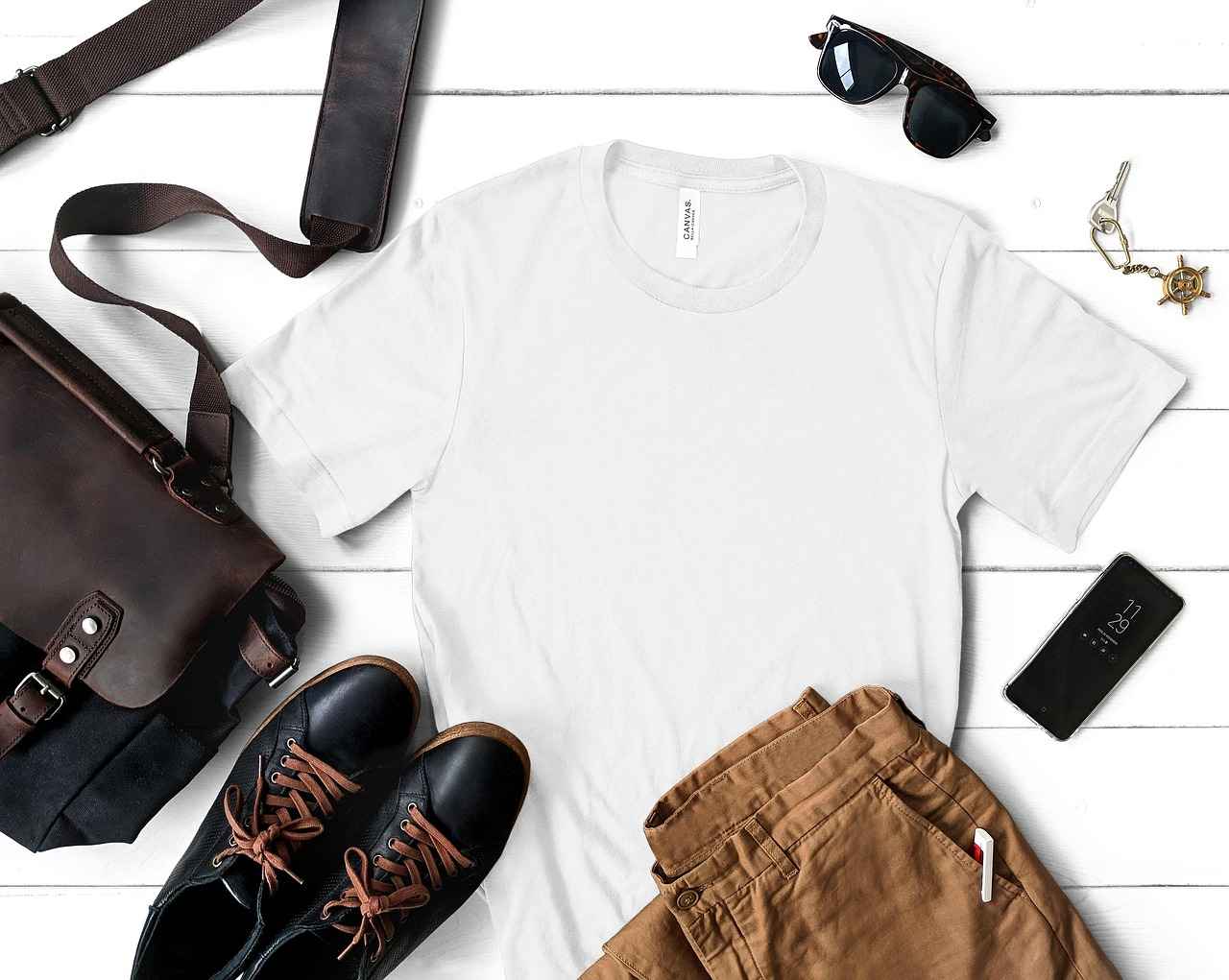
Choosing the Right Supplier
for your custom t-shirt needs is a vital step in ensuring that your event is a success. A reliable supplier not only guarantees quality products but also ensures timely delivery, which is crucial for any business event. Below are some essential tips to help you evaluate and select the best supplier for your requirements.
- Research Supplier Reputation: Begin your search by looking into potential suppliers’ reputations. Check online reviews, customer testimonials, and industry ratings. A supplier with a strong reputation is likely to provide better service and quality.
- Assess Quality of Materials: The quality of fabric and printing is paramount. Request detailed information about the materials used, and do not hesitate to ask for fabric samples. This will help you gauge the quality before making a bulk order.
- Evaluate Production Capabilities: Ensure that the supplier can handle your order size and meet your deadlines. Ask about their production processes and turnaround times to avoid any last-minute surprises.
- Request Samples: Before committing to a large order, request samples of their previous work. This allows you to assess the quality and craftsmanship of the t-shirts, ensuring they meet your standards.
- Compare Pricing: While cost shouldn’t be the only factor, it’s essential to get quotes from multiple suppliers. Compare not just the prices but also what is included in the cost, such as shipping and setup fees.
- Check Customer Service: A supplier’s customer service can make or break your experience. Gauge their responsiveness and willingness to assist you with your inquiries during your initial interactions.
By following these tips, you can confidently select a reliable supplier for your custom t-shirts, ensuring a smooth and successful experience for your business event.
Evaluating Supplier Reputation
When it comes to sourcing custom t-shirts for your business event, understanding a supplier’s reputation is crucial. A supplier’s credibility can significantly impact the quality of the products you receive, as well as their reliability in meeting deadlines. This section will guide you through the process of evaluating a supplier’s reputation using reviews and testimonials, ensuring you make an informed decision.
- Importance of Reviews: Customer reviews are a vital resource for gauging a supplier’s reliability. Look for reviews on reputable platforms such as Google, Yelp, or industry-specific forums. Pay attention to both positive and negative feedback to get a balanced view.
- Check Testimonials: Many suppliers showcase testimonials on their websites. While these can be helpful, remember that they might be curated. Look for testimonials that provide specific details about the service and product quality.
- Social Media Insights: Social media platforms can offer real-time feedback about a supplier. Check their profiles for customer interactions and comments. A responsive supplier is often a sign of good customer service.
- Industry Reputation: Research the supplier’s standing within the industry. Are they recognized for quality and service? Awards or certifications can also indicate credibility.
- Word of Mouth: Personal recommendations from colleagues or industry peers can be invaluable. Ask around to see if anyone has experience with the supplier.
By carefully analyzing these factors, you can gain a comprehensive understanding of a supplier’s reputation. This diligence not only helps in choosing the right supplier for your custom t-shirts but also ensures that your event will be a success.
Requesting Samples
before placing a bulk order is a crucial step in ensuring that you receive the quality and design you expect. This section outlines effective strategies for requesting and evaluating samples from potential suppliers, helping you avoid costly mistakes.
When considering custom t-shirts for your business event, sample requests serve as a vital checkpoint. Here are some key steps to follow:
- Identify Your Requirements: Clearly outline what you are looking for in terms of fabric, design, and size. This clarity will help suppliers provide you with the most relevant samples.
- Choose Multiple Suppliers: Don’t limit yourself to one supplier. Request samples from several sources to compare quality, pricing, and service.
- Be Specific: When requesting samples, specify the exact items you want to see. Include details such as color, size, and printing method to ensure you receive accurate representations of your order.
- Evaluate Quality: Once you receive the samples, assess them for quality. Check the fabric feel, stitching, print clarity, and overall finish. This evaluation is crucial for making an informed decision.
- Consider Turnaround Time: Inquire about the time it takes to produce the samples. Understanding lead times is essential for planning your event effectively.
- Ask Questions: Don’t hesitate to reach out to suppliers with any questions about their samples. This interaction can provide insights into their customer service and responsiveness.
By following these steps, you can effectively request and evaluate samples, ensuring that your final order meets your expectations and enhances your brand’s image at your event.
In conclusion, is not just a precaution but a necessary step in the custom t-shirt ordering process. It allows you to make informed decisions, ensuring that your bulk order aligns perfectly with your vision and needs.

Promoting Your Custom T-Shirts
Once you have your custom t-shirts, effective promotion is key to ensuring your event’s success. By employing strategic marketing techniques before and during the event, you can create excitement and boost attendance. Here are some proven strategies to help you market your custom t-shirts:
- Leverage Social Media: Utilize platforms like Facebook, Instagram, and Twitter to showcase your custom t-shirts. Share high-quality images and engaging content that highlights your designs. Consider using targeted ads to reach a broader audience. Use relevant hashtags to increase visibility and encourage attendees to share their own photos wearing the shirts.
- Create a Buzz with Teasers: Build anticipation by teasing your t-shirt designs leading up to the event. Share sneak peeks or behind-the-scenes content on your social media channels to generate interest and excitement among your audience.
- Engage Attendees with Giveaways: Offering custom t-shirts as giveaways can significantly enhance attendee engagement. Consider running contests or raffles where participants can win a free t-shirt. This not only promotes your product but also encourages interaction and participation at your event.
- Utilize Email Marketing: Send out newsletters or event invitations that feature your custom t-shirts prominently. Include a call-to-action that encourages recipients to learn more about the shirts or to register for the event. Highlight any special promotions or discounts available for early sign-ups.
- Incorporate T-Shirts into Your Event Branding: Ensure that your custom t-shirts are a central part of your event’s branding. Use them in promotional materials, on your website, and during the event itself. This creates a cohesive look and reinforces brand recognition.
By implementing these strategies, you can effectively promote your custom t-shirts and enhance your event’s overall success. Remember, the goal is to create a memorable experience that resonates with your audience and encourages them to engage with your brand.
Utilizing Social Media
In today’s digital age, social media platforms have become essential tools for promoting custom t-shirts, especially for business events. Leveraging these platforms effectively can create significant buzz and engagement around your event, making it a memorable experience for all attendees.
1. Choose the Right Platforms
Not all social media platforms are created equal. Depending on your target audience, you may find that certain platforms work better than others. For example:
- Instagram: Great for visual content. Share high-quality images of your t-shirts and use engaging stories to showcase their design.
- Facebook: Ideal for community engagement. Create events, share updates, and encourage discussions.
- Twitter: Perfect for real-time updates and promotions. Use hashtags to increase visibility.
2. Create Engaging Content
Content is king in the realm of social media. To capture your audience’s attention:
- Post behind-the-scenes content of the t-shirt design and printing process.
- Share testimonials or stories from previous events featuring your t-shirts.
- Utilize polls and questions to engage your audience and gather feedback.
3. Leverage Influencer Marketing
Partnering with influencers who resonate with your brand can significantly amplify your reach. Choose influencers who align with your values and have a strong connection with your target audience.
4. Use Paid Advertising
Consider investing in targeted ads to reach a broader audience. Platforms like Facebook and Instagram offer robust advertising tools that allow you to tailor your ads based on demographics and interests.
5. Monitor and Adjust Your Strategy
Finally, keep an eye on engagement metrics. Use analytics tools to track which posts perform best and adjust your strategy accordingly. This will help you refine your approach for future events.
By effectively utilizing social media, you can maximize the impact of your custom t-shirts and ensure your event resonates with your audience.
Engaging Attendees with Giveaways
In today’s competitive business environment, engaging attendees at events is crucial for success. One effective way to achieve this is by offering custom t-shirts as giveaways. These items not only serve as a memorable keepsake but also promote your brand long after the event has concluded. Here’s how to implement effective giveaway strategies to maximize attendee engagement at your business event.
- Define Your Goals: Start by determining what you want to achieve with your giveaways. Are you looking to increase brand awareness, gather leads, or simply enhance the attendee experience?
- Design Eye-Catching T-Shirts: A well-designed t-shirt can attract attention. Ensure your design is vibrant, includes your logo, and resonates with your target audience.
- Set Clear Participation Criteria: Encourage attendees to participate in your giveaway by setting clear criteria. This could be as simple as signing up for a newsletter or engaging with your social media platforms.
- Leverage Social Media: Promote your giveaway on social media before, during, and after the event. Use engaging visuals and hashtags to increase visibility and encourage sharing.
- Engage During the Event: Create opportunities for attendees to interact with your brand. Consider hosting contests or games where participants can win t-shirts, making the experience fun and engaging.
By implementing these strategies, you can create a buzz around your event and foster a sense of community among attendees. Remember, the key to successful giveaways lies in creating excitement and ensuring that your brand stays top-of-mind long after the event is over.
In conclusion, custom t-shirts as giveaways are not just promotional items; they are tools for enhancing engagement and building lasting relationships with your audience. With thoughtful planning and execution, your business event can leave a lasting impression.
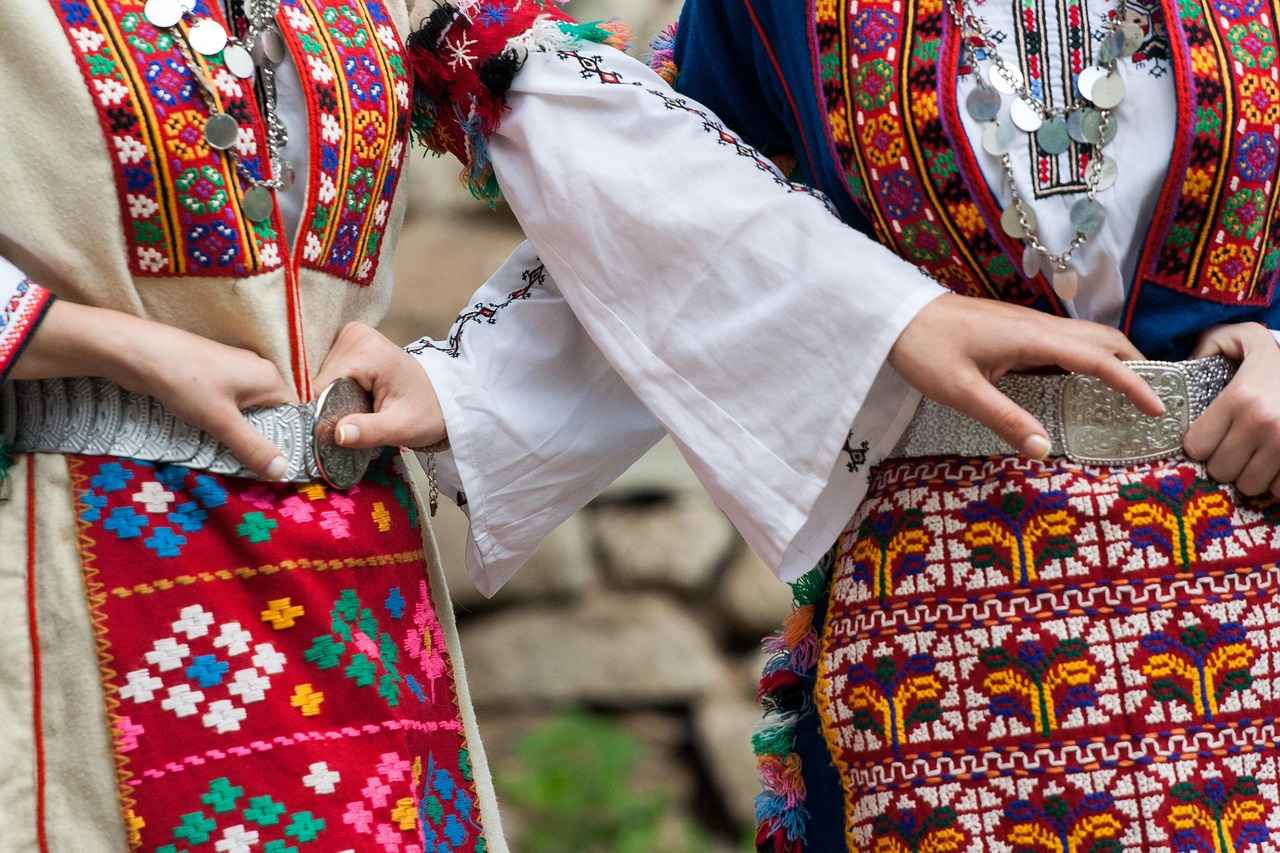
Conclusion: Making Your Event Memorable
In summary, the impact of custom t-shirts on your business event cannot be overstated. These shirts serve not only as a medium for branding but also as a means to enhance the overall experience for attendees. When thoughtfully designed, they can become a cherished keepsake that attendees will remember long after the event has concluded.
By taking the time to understand your audience and their preferences, you can create designs that resonate and evoke positive emotions. The choice of fabric and printing methods also plays a critical role in the quality and comfort of the shirts, which can directly influence how they are received by your audience.
Moreover, promoting these custom t-shirts before and during your event can generate excitement and engagement. Utilizing social media platforms effectively can amplify your reach, ensuring that your branding message is communicated widely. Additionally, incorporating giveaways can further incentivize participation and create a buzz around your event.
Ultimately, the process of creating custom t-shirts is an opportunity to reflect your brand’s identity and values. By following the steps outlined in this guide, you can ensure that your custom t-shirts not only meet your branding goals but also enhance the overall attendee experience. This will lead to a more memorable event that attendees will talk about and remember.
In conclusion, investing in custom t-shirts is a strategic decision that can yield significant returns in terms of brand visibility and attendee satisfaction. Make the most of this opportunity to create a lasting impression at your next business event.
Frequently Asked Questions
- What fabric should I choose for my custom t-shirts?
Choosing the right fabric depends on your event’s needs. If comfort is key, go for cotton. For durability and moisture-wicking properties, polyester is your best bet. Blended fabrics can also offer the best of both worlds!
- How do I create an eye-catching design?
Your design should reflect your brand! Incorporate your logo prominently and choose colors that resonate with your audience. Don’t shy away from creativity—think outside the box to make your shirts stand out!
- What printing method is best for my shirts?
It really depends on your design and budget. Screen printing is great for bulk orders with simple designs, while digital printing is perfect for intricate details. Consider your needs before deciding!
- How can I stay within my budget?
Understanding the pricing factors—like fabric choice and order quantity—can help you manage costs. Look for suppliers offering discounts for bulk orders or seasonal promotions to get the best deals!
- What should I look for in a supplier?
Reputation is crucial! Check reviews and testimonials to gauge reliability. Requesting samples is also a smart move to ensure quality before placing a large order. Don’t skip this step!
- How can I promote my custom t-shirts effectively?
Utilize social media platforms to create buzz before your event. Engaging attendees with giveaways can also boost excitement and participation. Get creative with your marketing strategies!










